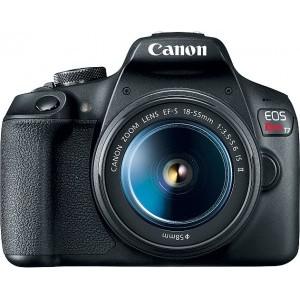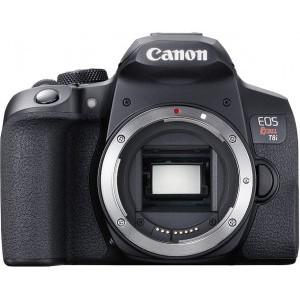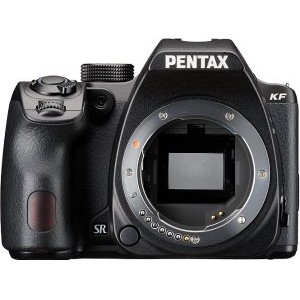


| Announced: | 26 Feb 2018 |
|---|---|
| Sensor Resolution: | 24Mp |
| Sensor Type: | APS-C CMOS |
| ISO: | 100-6400 |
| Weight: | 475g |
| Physical Dimensions: | 129 x 101 x 78 mm |
| Viewfinder: | Optical (pentamirror) |
| Screen Type: | 3" Fixed |
| Video Resolutions: | 1920 x 1080 |

47

45

47

55

57
This post contains affiliate links and I will be compensated if you make a purchase after clicking through my links. As an Amazon Associate I earn from qualifying purchases.
 pros
pros cons
consThought to soon replace the glorious T6, Canon Rebel T7 was launched together with the cheaper model T100 for a target of classic entry level photographers. The essential innovation of Rebel T7 is the 24.1 megapixel CMOS APS-C sensor, already present in more advanced models, like Canon Rebel SL2 and T7i. However, in this review on Canon EOS Rebel T/ I’ll try to go beyond such substantial innovation to reveal you all its main strengths and weaknesses.
The first impression I got holding Canon EOS Rebel T7 was of a rather small camera. At the same time I thought: for a camera priced less than 400 euros (the body only), the structure is solid and the grip is decent.
Of course, it goes without saying, to the touch it has that annoying plasticky feeling, typical of the cheapest models.
Focusing on details, the Rebel T7 has these characteristics:
Weight: 475 g (battery and memory card included)
Size: (length, height, depth): 129 x 101.3 x 77.6 mm
Thus is a pocket camera with a contained weight, but it certainly isn’t a feather (unless you’re comparing it with certain entry level reflex camera of a slightly higher level). Of course, this tendency to small size is to be read as a clear effort to get closer to mirrorless cameras, keeping a reflex system.
According to Canon tradition, the ring and the buttons are quite friendly and easily reachable. Obviously, the Rebel T7 is an entry level camera, so don’t expect many direct drives.
Seen from above, the differences with Rebel T6 are really few and you can notice, beside the flash and the on/off button:
Canon EOS Rebel T7 is clearly a product thought for those who decide to move to their first reflex camera and the proof is the presence of easy guidelines that can be very useful to learn the basic techniques with different shooting modes. In addition, there are several creative filters that will make the social network lovers very happy.
The qualitative standard is very similar to the T6: with a 24 megapixels APS-C sensor, definition is quite high, despite some difficulties in high ISO shots. Even though the sensor has the same size in both models, more megapixels inevitably lead to their smaller size. As a consequence, the light capture is limited for each pixel. (Wanna know more? Go to the article on ISO sensitivity)
Canon EOS Rebel T7 offers jpeg and RAW formats. Of course, the second one keeps more data and is recommended to those who want to take on long post production sessions. Having said that, we’re dealing with a “take and shoot” camera, so the jpeg format seems to be the most obvious choice (but not the best quality one, it should be recalled).
Staying among the so-called entry level cameras, Canon T7 offers to the less experienced photographers the automatic shooting mode, with good performance like all the Canon models of that range. The experienced ones, instead, can try all the creative tools typical of reflex cameras: aperture and shutter priority and manual mode.
The above-mentioned “scene” modes are important for the beginners but they are seen as some sort of aberration by the purists. My opinion is definitely not that snob and unrealistic. How can you learn important notions like ISO, aperture and shutter if not with tools that, at the beginning, try to give you “packages” with those lessons? Of course, they’re not the best in terms of creativity, but the preset modes, for instance, are useful to give you an idea on how a shot can change, modifying the exposure time and/or the aperture. And that’s something.
The fundamental comparisons are two: on the same home-ground with T6, on an away insidious game with Nikon D3400. Let’s see how Canon EOS 2000D plays out.
The main difference with T6 is in the 24.1 megapixels Canon CMOS APS-C sensor: better image definition than with the 18 megapixels of the successful sister. Of course, this is not a revolution, but a detail not to be ignored, especially if you love printing your shots in formats larger than usual.
For the rest, in Canon EOS Rebel T7 the 9 cross-centered points autofocus stays the same, as well as the 3 inches LCD display, Full HD 30p video support, Wi-Fi connectivity with NFC and 3 fps burst mode. The price, though, is very different: 340 dollars for 1300D versus around 450 dollars for Canon EOS T7 (in both cases, camera body + 18-55 mm lens).
This is an unjustifiable difference, in my opinion, even if in the Rebel T7 kit there is the IS stabilized 18-55mm lens, that makes the difference.
On the market since two years ago, at the moment Nikon D3400 costs around 480 dollars with the standard lens (18-55). In this respect, it’s a tie with Canon EOS T7. Also the number of megapixels of the sensor is the same, 24.
The real differences between the two models are in the focus points: Nikon has two more (11 instead of 9). Also the number of frames per second is different, again better in Nikon: 5 instead of 3.
Talking about connectivity, Canon EOS Rebel T7 is two years younger and we can feel it. While the Nikon model only has bluetooth (and wi-fi is optional), Canon has incorporated WiFi and NFC.
Good but not excellent, here is a summary of what I think about Rebel T7, the nth entry level camera that doesn’t bring anything new to the previous ones. The 24 megapixels sensor sounds more like a business move with the only aim of not having inferiority complex around the rival than an actual need.
Given the amazing dual pixel AF system on Canon APS-C (e.g. 77D, T7i, Rebel Sl2), I would have liked best an upgrade of the autofocus, which has remained 9 points like T6 instead. Besides, while T6 has a more aggressive and affordable price, Canon EOS 2000D is still quite expensive for now.
Maybe the body+lens kit might decrease to 350 dollars in a couple of months and then… the juice might be worth the squeeze. For now, unless you have particular needs (like incorporated wi-fi connection), Canon T6 and Nikon D3400 are to be preferred over Canon EOS Rebel T7.
| Review | compare Canon EOS Rebel T7 with | overall score |  Portrait Portrait |
 Landscape Landscape |
 Sport Sport |
 Street Street |
 Everyday Everyday |
|
 |
CanonEOS Rebel T7 | 50 | 47 | 45 | 47 | 55 | 57 | buy on |
|---|---|---|---|---|---|---|---|---|
 |
CanonEOS Rebel T8i | 59 | 51 | 49 | 57 | 66 | 69 | $775.12 |
 |
PentaxKF | 58 | 51 | 50 | 55 | 63 | 67 | $696.95 |
The Canon EOS Rebel T7 is a DSLR camera launched on 02/26/2018.
Technically speaking, the Canon EOS Rebel T7 ranks in the average of its category, scoring 50 overall. The Canon EOS Rebel T7 weights 475 gr and spans 129 x 101 x 78 mm. This means that it is particularly light and small, indeed one of the most handy options within its category.
Going into details, the Canon EOS Rebel T7 behaves better than average in its category for:
On the contrary, the performance of Canon EOS Rebel T7 is below the category average in:
However, the technical performance of your camera should be put in context. Indeed, depending on the type of photography you are interested in, each individual camera feature can impact your pictures to a different extent. This is the reason why we developed the iCamRank. iCamRank has been designed to weight all the individual technical specifications of each camera in the camerarace database, depending on different shooting conditions. Thus, here is what we suggest, depending on the photography type you like most:
Last but not least, the price. You can find the Canon EOS Rebel T7 sold on Amazon for a price comprised between 479.0 USD and 649.0 USD, which is in the average for this camera category.
Overall, Canon EOS Rebel T7 is not the best value for money. Unless you have specific reasons to go for it, we suggest you to consider available alternatives. Click here to see alternative options.
Sensor Type
CMOS
Sensor Size
APS-C
Sensor Dimensions
22.3 x 14.9 mm
Sensor Area
332.27 mm2
Sensor Resolution
24 Mp
Max Image Resolution
6000 x 4000
Max Native ISO
6400
Min Native ISO
100
RAW Support

Manual Focus

Lens Mount
Canon EF/EF-S
Number of Lenses
301
Focal Length Multiplier
1.6
Screen Type
Fixed
Screen Size
3.0"
Screen Resolution
920Kdot
Live View

Touch Screen

Viewfinder
Optical (pentamirror)
Viewfinder Resolution
None
Viewfinder Coverage
95
Viewfinder Magnification
0.5
Min Shutter Speed
30s
Max Shutter Speed
1/4000s
Continuous Shooting
3fps
Shutter Priority

Aperture Priority

Manual Exposure Mode

Exposure Compensation

Custom White Balance

Image Stabilization

Built-in Flash

Flash Range
9.2
Max Flash Sync
1/200s
Flash Modes
Auto On Off Red-eye
External Flash

AE Bracketing

WB Bracketing

DxO Overall Score
DxO Color Depth
DxO Dynamic Range
DxO Low Light ISO
Multi-Segment

Average

Spot

Partial

AF-Area

Center Weighted

AF Touch

AF Continuous

AF Single

AF Tracking

AF Selective

AF Center

AF MultiArea

AF Live View

AF Face Detection

AF Contrast Detection

AF Phase Detection

Number of Focus Points
9
Number of Cross Focus Points
0
Video Resolutions
1920 x 1080 @ 30p / 46 Mbps MOV H.264 Linear PCM
Max Video Resolution
1920x1080
Video Formats
MPEG-4 H.264
Microphone Port

Headphone Port

Wireless Connectivity
Built-in
HDMI

USB
USB 2.0 (480 Mbit/sec)
Environmental Sealing

Water Proof

Dust Proof

Shock Proof

Crush Proof

Freeze Proof

Weight
475g
Physical Dimensions
129 x 101 x 78 mm
Battery Life
500
Battery Type
Battery Pack
Battery Model
LP-E10
Self Timer
Yes (2 or 10 sec)
Timelapse Recording

GPS

Storage Type
SD SDHC SDXC card
Storage Slots
1
Copyright 2024
EMA s.r.l.s. | p.i. 11740890014